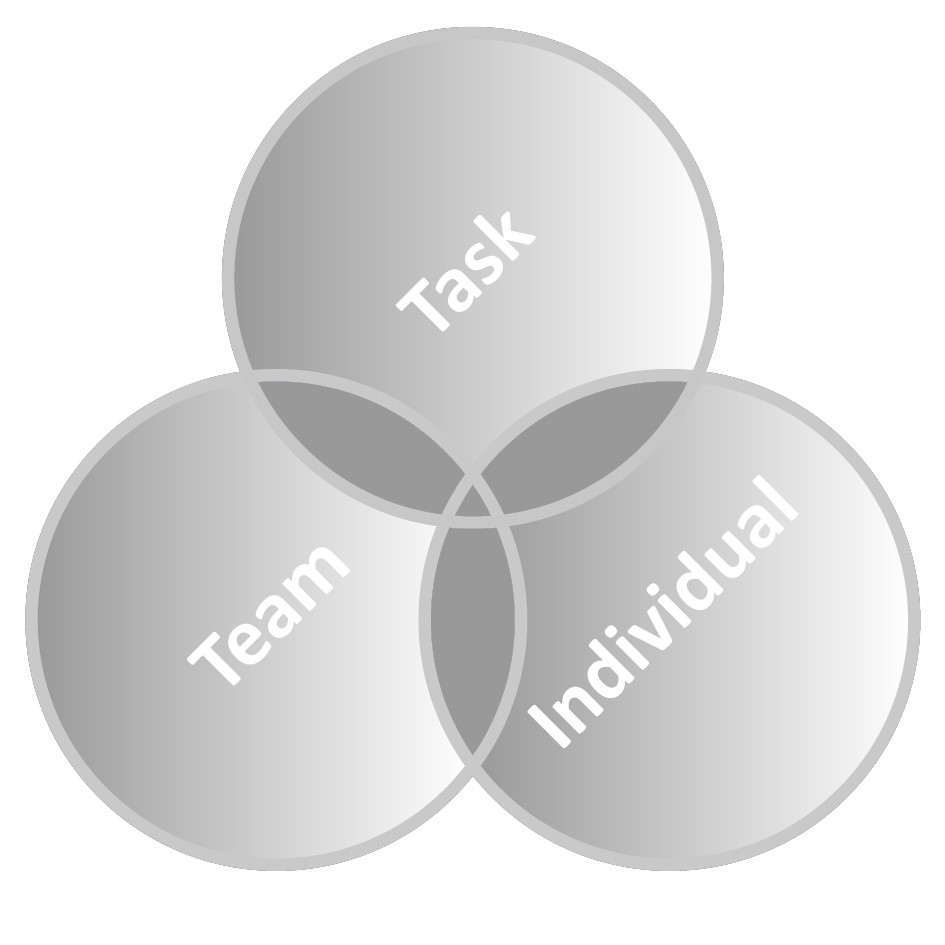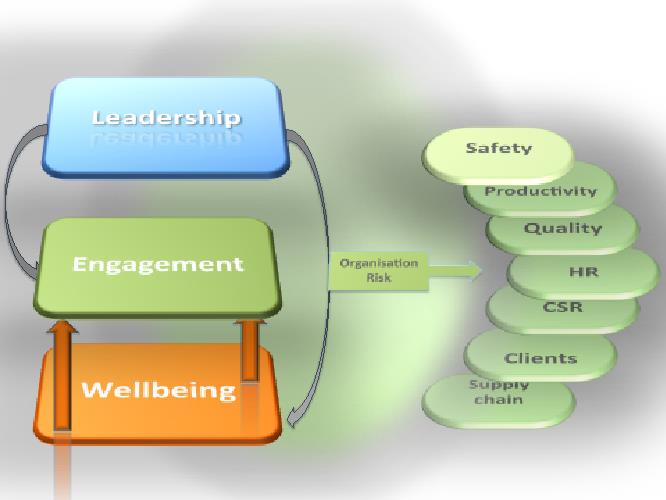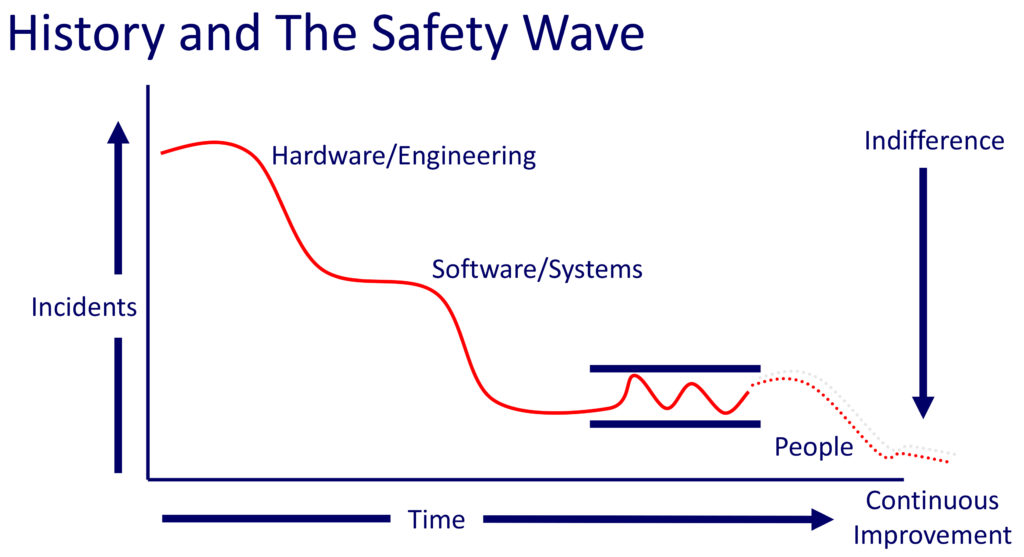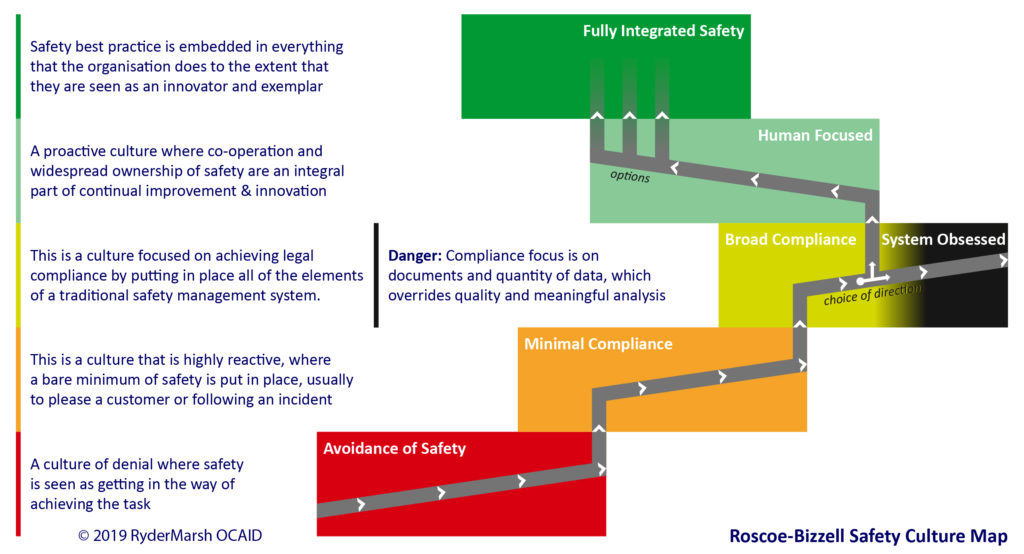

Leadership has been well described by many authors, some good some bad and one I find that allows us to pull together our thoughts specifically around engagement and motivation is by John Adair in his model of Action Centered Leadership (Fig 1.).
The model links well with our own Integrated Improvement Model (HGIIM) (Kevin Hard / Nigel Girling) published in 2016 (Fig 2.) and is further supported by Dr. Derek Mobray’s Psychological Resilience framework showing organisations where they can start to build resilience and sustainability.

The three elements fit as such:
- Leadership – An effective leader will ensure all three are in balance
- Engagement – Working together for a common goal – collaboration and innovation
- Wellbeing – Feeling part of a/the team, valued
The Hard-Girling model is more strategic showing how leadership impacts on engagement and wellbeing but wellbeing, or more specifically “Caring” actually underpins the model. What that means is that a good leader (at all levels of the organisation) can impact on engagement but if the team or individuals are not in a good place (feeling cared for and valued) then the engagement will only last for so long. Dr. Derek Mobray’s psychological resilience model also overlays the HGIIM brilliantly with a more in depth analysis of the psychological impact of non-engaged people.
Clarke and McCloud pointed out the power of engagement in their Engage for Success paper 2014 where one of the four pillars of engagement is Strategic Narrative. Where there is a lack of strategic narrative there is a threat to the vison of that organisation. If people don’t feel part of, can’t see the path or can’t contribute to the vision, then that vision is in danger of becoming a ‘mirage’. This can be said of any team in the organisation where the supervisor, manager, charge hand, foreman etc. can have the same impact on the team’s goals.
We have interviewed thousands of people from all levels of the organisation and find that, even if the front line workers have the same roles the difference in their performance, Quality of working life (QoWL) and engagement is dramatically impacted by their immediate “leader”.
In a recent presentation to a board I suggested their vision was a mirage because they didn’t care about their people. Despite spending millions on their staff the engagement survey came back with the same headlines – “you don’t care about us”.
How could that be? They had spent millions on their staff!
It was simple – no one cared to ask their opinions or included the staff in any decisions therefore they didn’t feel valued or cared for – intrinsic motivators in engaged organisations!
Much like Adair’s model, engaging with them through valuing their input, having a sense of ownership and fairness will develop those individuals, their teams and ultimately the organisation.
So, what about Safety?
We work with organisations that have reached the plateau on the safety wave and are looking to move to the next level of Cultural Safety ® (Fig 3.).

Organisations at this point in their journey are generally compliant and have all the systems in place they need. However creating more and more systems will not improve the safety culture any further and those organisations will become “system obsessed”. Getting to the next level means looking beyond safe systems of work to ‘people’, or as we call it – people focused.
As you can see from our own Roscoe-Bizzell model of Safety Culture (Fig 4.) that means engaging with your people.

- A challenge for theory X leaders in your organisation – indeed
- An opportunity for emotionally intelligent leaders to have an impact – indeed
- An opportunity for the organisation to improve its Organisational Culture and Individual’s Development (OCAID) – indeed
By Kevin Hard
